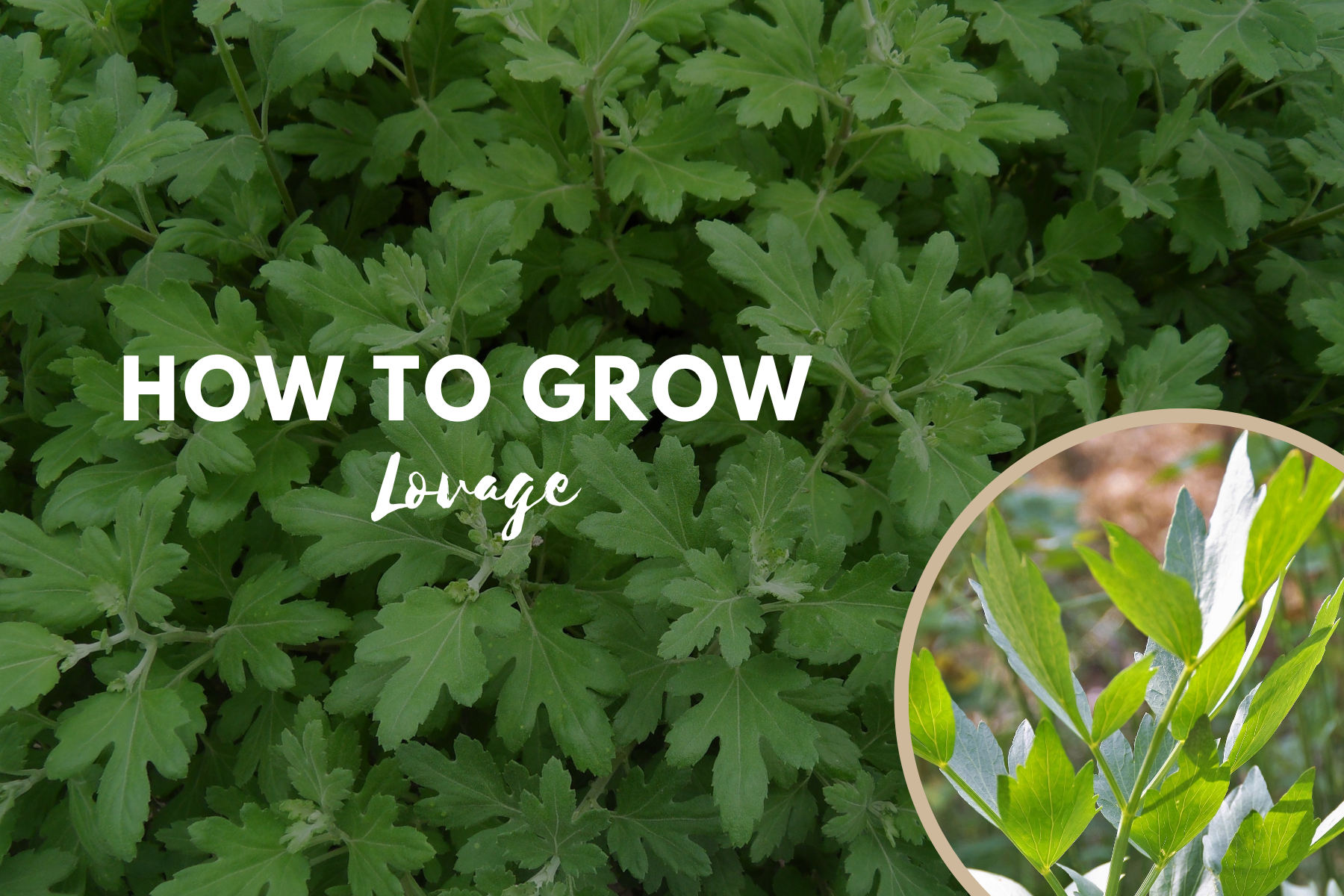Last Updated on April 15, 2024 by Real Men Sow
Lovage is known to be used in soups, stews, and salads. The whole plant can be eaten, root to tip. It has a bright, crisp flavour that reminds me a little of citrusy celery. It is also sturdy, easy to reseed, and doesn’t become invasive. Its frilly foliage makes an impressive display in the garden. Bright yellow flowers in July are incredibly fragrant.
The perennial herb Lovage (Levisticum Officinale), is part of the Apiaceae family. It is related to parsley, cilantro, and dill, as well as carrots, celery, and other vegetables. Because of its similarity in appearance and flavor to celery, lovage often goes by the name mountain celery. It is also known as Maggi or smellage.
Site Preparation
Lovage likes full sun to partial shade, rich, moist, organic soil. Consider how much space you can dedicate to this beautiful herb before you start planting.
The perfect backdrop to any garden is mature plants that can reach up to 4-7 feet in height. It can also be grown in large containers! The lovage’s greenish-yellow flowers attract many beneficial insects and pollinators in the middle of summer.
Propagation
By Seed
Lovingkindness seeds can be directly sown outdoors if the soil temperature is above 60 degrees F. Place the seeds in prepared soil, and cover with sand. Alternatively, you can start seeds indoors between 5-6 weeks and the last frost. Cover seeds with fresh seed mixture and lightly cover with sand.
You must maintain soil moisture but not allow it to become too dry. Remember that seeds saved can have low germination rates and can take up 20 days to sprout. Use fresh seeds less than a year old as they don’t keep well.
Seedlings and Transplants
You can transplant your seedlings into the garden once they have at least two sets of true leaves, or if you purchased nursery starts. Add plenty of compost to your soil and dig a hole that is the same size as the root ball. Water the soil well and tamp it down.
Root Division
Root division is another way to propagate lovage. After the plant has reached about a foot in height, you can dig it up in the spring. Dig down to a foot and then dig as far as the crown of the plant.
It is important to extract enough roots to allow the plant to grow after being replanted. I have had success as long as I am able to preserve at least half the root structure. You can shake off excess soil, then divide the crown and roots in two sections using a garden spade or a hori-hori knife or a pair of trimmers. Take out any branches or dead roots from the plant and then replant it back where it was. Place the other half of the plant in prepared soil.
Growing Lovage
Lovage thrives in full sun but can tolerate some shade in the day, especially in warmer zones. It should have a pH of around 6.8 and be well-drained. It likes rich soil, so make sure to add plenty of organic matter.
The soil should be kept moist but not too wet. The soil will dry out and the leaves can become bitter. To retain water, add an inch of leaf mold, peat moss, or grass cuttings to the soil. Place plants at 18 inches apart. They mature between 85 and 95 days after being planted. Although you can grow lovage in containers it is not recommended. Its large root system means that you will need a large pot at least 12 inches in depth and width.
You don’t need to prune lovage. However, especially if you harvest the leaves frequently, it’s a good idea to trim large plants to keep them in shape. Use a pair of sharp pruners to trim the stems just above the leaf node. Keep the plant healthy by not taking more than half the leaves at once.
General Care Guide
Water
Always ensure that the soil is only damp enough to touch but not soggy. The soil can dry out and cause bitter taste in the leaves. To retain moisture, add mulch to your garden, such as peat moss or compost.
Temperature
Lovage prefers to sow at temperatures above 60°F, but mature plants can withstand cold and can withstand temperatures as low as -5°F.
Fertilizer
You can provide your plants with either compost tea or diluted fish oil throughout the growing season. Mix in old compost or commercial organic plant mix each spring to amend the soil.
How to Harvest and Store Lovage
The first growing season may allow for the harvest of lovage. Like most culinary herbs, you should cut the leaves in the morning once the dew has dried. Wash the leaves well to avoid any loss of aromatic oils.
You can use the lovage fresh, but you can also freeze it in plastic bags and dry it. Hang the cut flowers upside-down in a dark, well-ventilated area.


